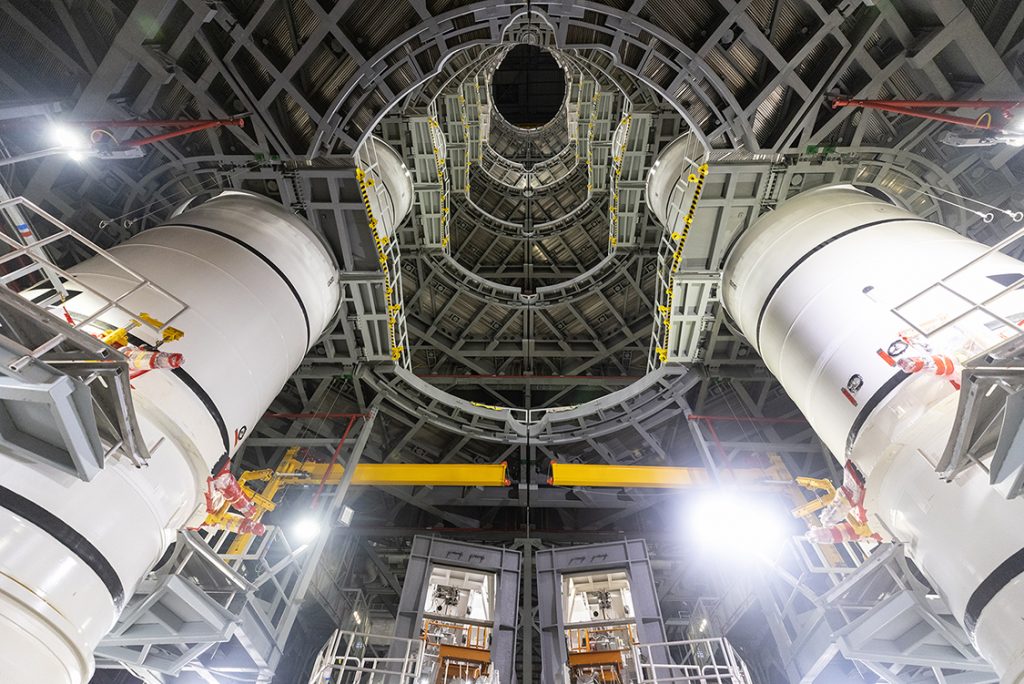The fully stacked twin solid rocket boosters for NASA’s Space Launch System (SLS) rocket are mated atop the mobile launcher at the agency’s Kennedy Space Center in Florida as stacking and assembly activities for NASA’s Artemis I mission are underway. Crews from the spaceport’s Exploration Ground Systems and contractor Jacobs teams are currently preparing to lift the 188,000-pound core stage and place it in between the two solid rocket boosters. Teams will use a specialized crane to lift, place, and secure the core stage on the mobile launcher inside the spaceport’s iconic Vehicle Assembly Building (VAB).

The 212-foot-tall core stage, which will provide more than 2 million pounds of thrust at launch, arrived at Kennedy on April 27. Together with the two solid rocket boosters, the SLS rocket will provide more than 8.8 million pounds of thrust to launch the first of NASA’s next-generation Artemis Moon missions. Soon after the core stage activity, crews will stack and integrate other elements of the rocket needed for launch preparedness testing that occurs inside the VAB before final assembly of the rocket and the addition of the Orion spacecraft. The mobile launcher serves as a platform not just for stacking but as a key supplier of power, communications, coolants, and propellant for the rocket and spacecraft before launch.
With Artemis, NASA will land the first woman and the first person of color on the Moon and establish sustainable exploration in preparation for missions to Mars. SLS and NASA’s Orion spacecraft, along with the commercial human landing system and the Gateway in orbit around the Moon, are NASA’s backbone for deep space exploration. SLS is the only rocket that can send Orion, astronauts, and supplies to the Moon in a single mission.
